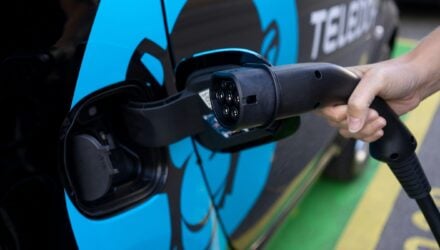As flights for cargo transportation were grounded worldwide due to the pandemic, spikes in demand for shipping services escalated rapidly. Yet, a third of shipping containers in the world are empty in transportation and every fifth truck in the European Union travels without cargo. For the people who make sure goods are distributed worldwide, it was shown that a new era of technical innovation and optimization was needed to keep up in modern times.
 Digital transformations have progressed on a sector-wide scale, opening up a new range of ways that companies can make logistics more efficient and sustainable.
Digital transformations have progressed on a sector-wide scale, opening up a new range of ways that companies can make logistics more efficient and sustainable.
One of the fastest growing sustainability trends for logistics in transportation is the adoption of Artificial Intelligence (AI). Currently, only 12% of logistics companies use AI in operations, but it is expected to grow to 60% by 2025. Digital transformation in any industry helps to spot new potential efficiencies, and for shipping this opens the door to big ecological savings as well. Let’s take a look at the top three foreseeable technological solutions in shipping that will help shape business models towards a more sustainable tomorrow.
Demand Forecasting Through AI Predictive Analytics
Balancing network capacity management is tricky as not every shipment is a linear equation. Oftentimes, there are intermediary stops that weren’t originally planned for, and the calculation of these potential points alongside all of the other data (e.g. shipment weight, number of containers, distance of shipment, etc.) makes it nearly impossible for a human to calculate ahead of time. By applying data evaluations that feed into predictive analytics, AI can create insights to help shipping companies anticipate changes in their transportation ahead of the demand curve.
There are many companies that have customized state-of-the-art AI platforms that are developed exclusively for logistics. Our company, Transmetrics, optimizes transport planning by leveraging the power of machine learning and predictive analytics. By combining the strengths of humans and AI, these custom platforms can ensure the highest operational benefits and reduce the environmental impact of logistics.
This allows for consolidated improvements in multiple venues: refining shipping volumes and capacity utilization, optimizing vehicle routing, and reducing the number of empty runs—all of which decrease overall resource inefficiencies including CO2. A report by McKinsey predicts that AI will create an entirely new “logistics paradigm” by 2030 as it continues to outperform humans at repetitive but mission-critical tasks.
IoT Applied to Vehicle Tracking
The Internet of Things (IoT) in logistics and shipping is powered by telematics, which is a method of monitoring an asset (car, truck, heavy equipment, etc.) with GPS and using onboard diagnostics to record activity in real-time. Telematics combined with IoT can provide fleet operators with remote monitoring capabilities. There are a variety of different types of IoT sensors that can perform a multitude of tasks—helping to accurately derive and share real-time fleet data.
With the capacity to measure the weight of the load, identify the exact speed of the vehicle, calculate MPG, track the delivery process, and even help to eliminate road accidents—these IoT sensors can help shipping companies make more efficient decisions in the heat of the moment. Having accurate and up-to-date information about your fleet helps to maintain control over inefficient driving behaviors that waste fuel and produce unnecessary CO2 emissions.
According to the International Transport Forum report, carbon dioxide emissions from freight transportation account for 30% of all transportation-related carbon emissions from fuel combustion, and represent over 7% of total global emissions.
With a custom-designed AI algorithm implemented into linehaul planning, network investment planning helps to improve multiple facets. With the capacity to forecast future volumes and improve capacity utilization, your company can create a standard of knowledge that can be shared across departments for better optimization. With a sound and factual blueprint for your fleet’s overall operations you can drastically improve your efficiency in planning and in return radically reduce CO2 emissions.
Since the pandemic started carbon dioxide emissions fell by 7% globally, which is equal to 2.6 billion metric tons of CO2. Now that vaccines are being administered and people are beginning to get back out into society and revisit their old ways, industries must be mindful in their choices to ensure that sustainable practices have longevity. By investing in these aforementioned up-and-coming technologies, shipping companies can shape the logistics business model for the better.
Author: Marc Meyer — Chief Commercial Officer at Transmetrics



















